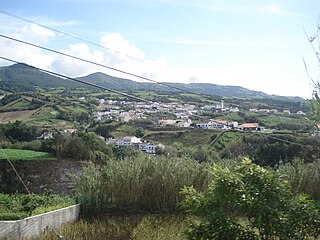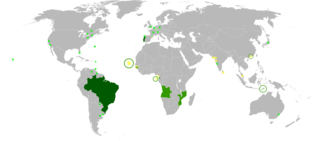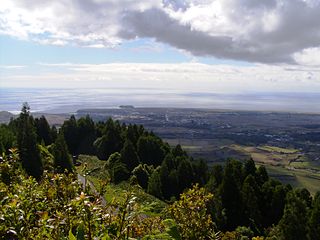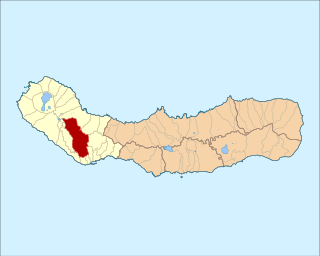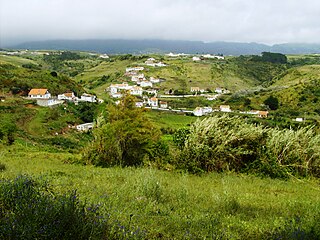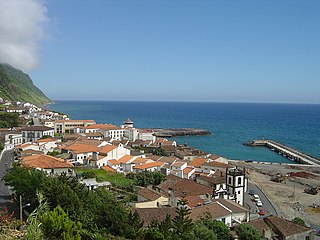| Água de Pau | |
| Civil Parish ( Freguesia ) | |
A view of Baixo da Areia beach along the southern coastal area, separated from the village of Caloura | |
| Official name:Freguesia de Água de Pau | |
| Name origin: Portuguese for water of wood | |
| Country | |
|---|---|
| Autonomous Region | |
| Island | São Miguel |
| Municipality | Lagoa |
| Localities | Água de Pau,Caloura, Cerco,Cinzeiro,Galera,Jubileu |
| Landmark | Convent of Caloura |
| Center | Água de Pau |
| - elevation | 103 m (338 ft) |
| - coordinates | 37°43′16″N25°30′38″W / 37.72111°N 25.51056°W Coordinates: 37°43′16″N25°30′38″W / 37.72111°N 25.51056°W |
| Highest point | Pico da Barrosa |
| - location | Água de Pau Massif |
| - elevation | 922 m (3,025 ft) |
| - coordinates | 37°45′36″N25°29′29″W / 37.76000°N 25.49139°W |
| Lowest point | Sea level |
| - location | Atlantic Ocean |
| - elevation | 0 m (0 ft) |
| Area | 17.46 km2 (7 sq mi) |
| - urban | .40 km2 (0 sq mi) |
| Population | 3,058 (2011) |
| Density | 175/km2 (453/sq mi) |
| Settlement | c. 1414 |
| - Parish | 28 July 1500 |
| - Civil Parish | c. 1515 |
| LAU | Junta Freguesia |
| - location | Largo de Santiago |
| President Junta | Roberto Manuel Pereira de Sousa |
| President Assembleia | Mónica Isabel Barranqueiro Domingues |
| Timezone | Azores (UTC-1) |
| - summer (DST) | Azores (UTC0) |
| Postal Zone | 9560-217 |
| Area Code & Prefix | (+351) 292 XX XX XX |
| Patron Saint | Nossa Senhora dos Anjos |
The location of the civil parish of Água de Pau within the municipality of Lagoa | |
| Wikimedia Commons: Água de Pau (Lagoa) | |
Água de Pau is a civil parish in the municipality of Lagoa in the Portuguese archipelago of the Azores. The population in 2011 was 3,058, [1] in an area of 17.46 km². [2]
Concelho, is the Portuguese-language term for municipality, referring to the territorial division. In comparison, the word município refers to the organs of State. This differentiation is still in use in Portugal and some of its former overseas provinces, but is no longer in use in Brazil following the abolition of these organs, in favour of the French prefecture system.

Portugal, officially the Portuguese Republic, is a country located mostly on the Iberian Peninsula in southwestern Europe. It is the westernmost sovereign state of mainland Europe. It is bordered to the west and south by the Atlantic Ocean and to the north and east by Spain. Its territory also includes the Atlantic archipelagos of the Azores and Madeira, both autonomous regions with their own regional governments.

The Azores, officially the Autonomous Region of the Azores, is one of the two autonomous regions of Portugal. It is an archipelago composed of nine volcanic islands in the North Atlantic Ocean about 1,360 km (850 mi) west of continental Portugal, about 1,643 km (1,021 mi) west of Lisbon, in continental Portugal, about 1,507 km (936 mi) northwest of Morocco, and about 1,925 km (1,196 mi) southeast of Newfoundland, Canada.










